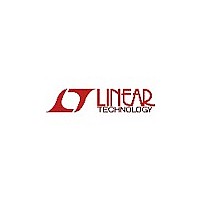LTC3868IUH#TRPBF Linear Technology, LTC3868IUH#TRPBF Datasheet - Page 18

LTC3868IUH#TRPBF
Manufacturer Part Number
LTC3868IUH#TRPBF
Description
IC CTRLR STP-DN SYNC DUAL 32QFN
Manufacturer
Linear Technology
Series
PolyPhase®r
Type
Step-Down (Buck)r
Datasheet
1.LTC3868EUHPBF.pdf
(38 pages)
Specifications of LTC3868IUH#TRPBF
Internal Switch(s)
No
Synchronous Rectifier
Yes
Number Of Outputs
2
Voltage - Output
0.8 ~ 14 V
Frequency - Switching
50kHz ~ 900kHz
Voltage - Input
4 ~ 24 V
Operating Temperature
-40°C ~ 85°C
Mounting Type
Surface Mount
Package / Case
32-QFN
Lead Free Status / RoHS Status
Lead free / RoHS Compliant
Current - Output
-
Power - Output
-
Available stocks
Company
Part Number
Manufacturer
Quantity
Price
LTC3868
The equivalent resistance R1||R2 is scaled to the room
temperature inductance and maximum DCR:
The sense resistor values are:
The maximum power loss in R1 is related to duty cycle,
and will occur in continuous mode at the maximum input
voltage:
Ensure that R1 has a power rating higher than this value.
If high effi ciency is necessary at light loads, consider this
power loss when deciding whether to use DCR sensing or
sense resistors. Light load power loss can be modestly
higher with a DCR network than with a sense resistor, due
to the extra switching losses incurred through R1. However,
DCR sensing eliminates a sense resistor, reduces conduc-
tion losses and provides higher effi ciency at heavy loads.
Peak effi ciency is about the same with either method.
Inductor Value Calculation
The operating frequency and inductor selection are inter-
related in that higher operating frequencies allow the use
of smaller inductor and capacitor values. So why would
anyone ever choose to operate at lower frequencies with
larger components? The answer is effi ciency. A higher
frequency generally results in lower effi ciency because
of MOSFET gate charge losses. In addition to this basic
trade-off, the effect of inductor value on ripple current and
low current operation must also be considered.
The inductor value has a direct effect on ripple current. The
inductor ripple current ∆I
tance or higher frequency and increases with higher V
18
APPLICATIONS INFORMATION
R1|| R2 =
R1=
P
ΔI
LOSS
L
=
R1|| R2
( )
R1=
R
f
D
1
( )
L
(
DCR at 20°C
(
; R2 =
V
V
OUT
IN(MAX)
⎛
⎜
⎝
1–
L
R1• R
1– R
– V
L
V
R1
decreases with higher induc-
V
OUT
)
IN
OUT
D
• C1
D
⎞
⎟
⎠
)
• V
OUT
IN
:
Accepting larger values of ∆I
inductances, but results in higher output voltage ripple
and greater core losses. A reasonable starting point for
setting ripple current is ∆I
∆I
The inductor value also has secondary effects. The tran-
sition to Burst Mode operation begins when the average
inductor current required results in a peak current below
30% of the current limit determined by R
inductor values (higher ∆I
lower load currents, which can cause a dip in effi ciency in
the upper range of low current operation. In Burst Mode
operation, lower inductance values will cause the burst
frequency to decrease.
Inductor Core Selection
Once the value for L is known, the type of inductor must
be selected. High effi ciency converters generally cannot
afford the core loss found in low cost powdered iron cores,
forcing the use of more expensive ferrite or molypermalloy
cores. Actual core loss is independent of core size for a
fi xed inductor value, but it is very dependent on inductance
value selected. As inductance increases, core losses go
down. Unfortunately, increased inductance requires more
turns of wire and therefore copper losses will increase.
Ferrite designs have very low core loss and are preferred
at high switching frequencies, so design goals can con-
centrate on copper loss and preventing saturation. Ferrite
core material saturates hard, which means that induc-
tance collapses abruptly when the peak design current is
exceeded. This results in an abrupt increase in inductor
ripple current and consequent output voltage ripple. Do
not allow the core to saturate!
Power MOSFET and Schottky Diode (Optional)
Selection
Two external power MOSFETs must be selected for each
controller in the LTC3868: one N-channel MOSFET for the
top (main) switch, and one N-channel MOSFET for the
bottom (synchronous) switch.
The peak-to-peak drive levels are set by the INTV
This voltage is typically 5.2V during start-up (see EXTV
L
occurs at the maximum input voltage.
L
L
) will cause this to occur at
= 0.3(I
L
allows the use of low
MAX
). The maximum
SENSE
CC
. Lower
voltage.
3868fd
CC













